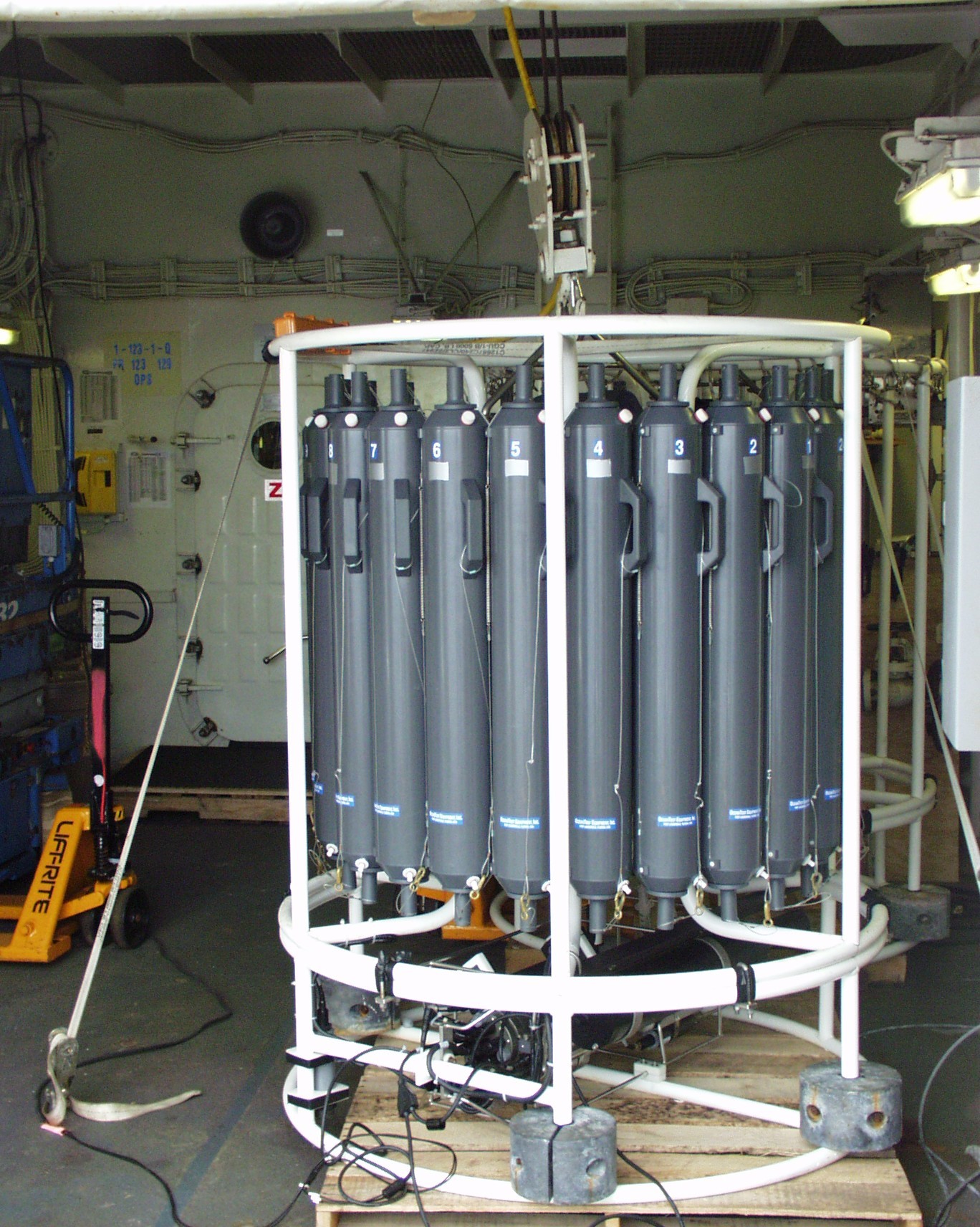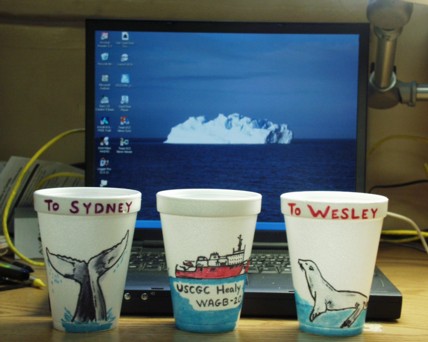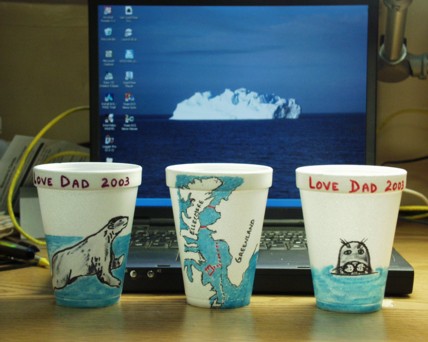|
|
Expedition
Expedition | People
|
Log - July-25-2003
by Robert McCarthy
Previous | Next
| Getting ready to collect important data |
| I spent last night decorating Styrofoam cups. These cups will be lowered in the water in a bag attached to the CTD rosette. The rosette is a circular cage that Niskin bottles are secured to that houses a conductivity, temperature and pressure sensor (CTD). The scientists lower the rosette attached to a winch into the water, and as it descends to the bottom, the CTD records the salinity (Conductivity), Temperature, and pressure (Depth). The scientists then plot this data immediately, so they can see at what depths they want water samples. Then as they bring the rosette back to the surface, they can stop the winch at the correct depth and send a signal down to the Niskin bottle to close. These rosettes can hold 24 bottles, each containing 10 liters, so depending on how many samples they need for certain tests onboard, they can trip 1 or any number of bottles. They repeat this procedure all the way to the surface. |
 |
| So when these Styrofoam cups are lowered with the rosette to great depths, the water pressure on these cups will be many times larger than atmospheric pressure because of the total weight of the water above them is pushing down in all directions. The cups, being mostly comprised of air, will dramatically shrink. Upon returning to the surface, you will have a miniature cup as a keepsake. I made 3 cups, one for each of my children, and one for my desk at school. |
 |
 |
Pressure is force (measured in Newtons) divided by area (measured in square meters). So, the pressure you exert while standing on the floor is your weight (force) divided by the area of your feet. So the pressure is doubled when you stand on one foot, since the total area is halved. Similarly, wearing high heals reduces the area even more, so the pressure underneath is increased. Pressure in the water, called hydrostatic pressure, is found from the product of the density of the water, gravity, and the height of the water column above. These cups will be lowered to a depth of 2,430 meters, and the density of the seawater here is about 1,024 kg per meter cubed. So the calculated hydrostatic pressure is 24,385,536 Pascals. (Pascals is the unit for pressure, and atmospheric pressure is 101,300 Pascals.) So the cup will experience a pressure about 242 times larger than surface pressure, termed 242 atmospheres! I canŐt wait to see what they will look like upon return to the surface. Tomorrow, if all goes well, I will show the same three cups, and try to determine the volume change. |
|
